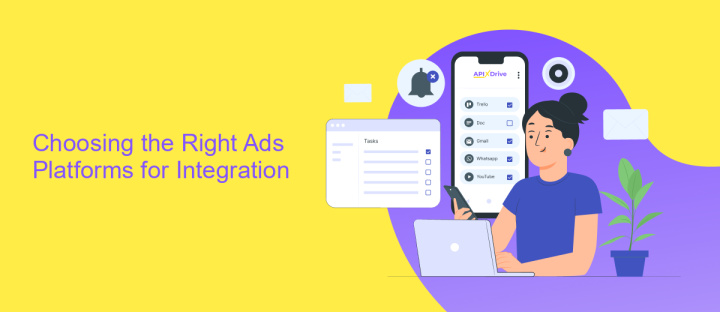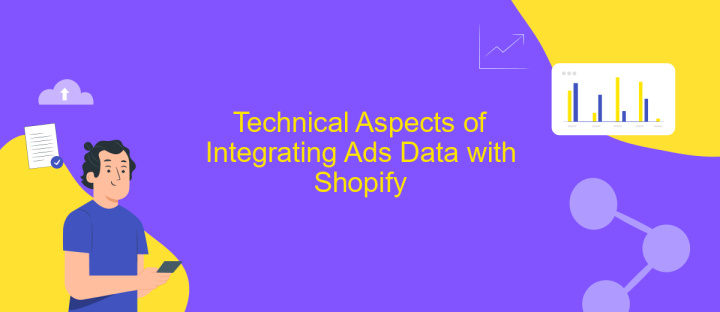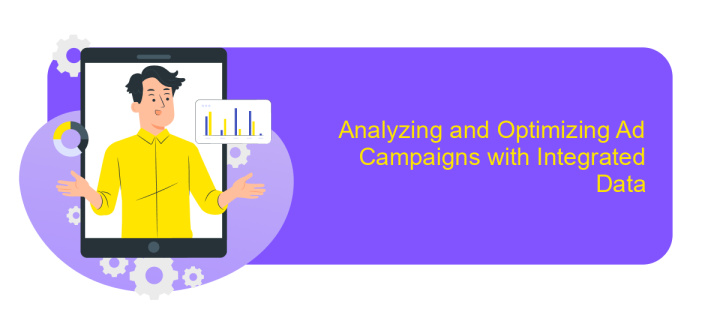Ads Data Integration to Shopify
Integrating ads data into Shopify is a powerful strategy for e-commerce businesses looking to optimize their marketing efforts and drive sales. By seamlessly connecting advertising platforms with Shopify, businesses can gain valuable insights into customer behavior, track campaign performance, and make data-driven decisions. This integration not only streamlines operations but also enhances the overall shopping experience, ultimately leading to increased customer satisfaction and business growth.
Understanding the Benefits of Ads Data Integration with Shopify
Integrating ads data with Shopify offers businesses a seamless way to optimize their marketing strategies and enhance sales performance. By connecting ad platforms directly to Shopify, merchants can gain comprehensive insights into customer behavior, ad performance, and sales metrics. This integration helps in making data-driven decisions that are crucial for scaling a business effectively.
- Centralized Data Management: Streamline all ad data in one place for easier analysis and reporting.
- Improved Targeting: Leverage insights to refine audience targeting and increase conversion rates.
- Cost Efficiency: Identify high-performing ads and allocate budget effectively to maximize ROI.
- Enhanced Customer Insights: Understand customer preferences and behavior for better product recommendations.
- Automated Reporting: Save time with automated data syncing and reporting processes.
Ultimately, the integration of ads data with Shopify not only simplifies the management of advertising campaigns but also empowers businesses to make informed decisions that drive growth. By utilizing these insights, companies can improve their marketing effectiveness and achieve a competitive edge in the e-commerce landscape.
Choosing the Right Ads Platforms for Integration

When choosing the right ads platforms for integration with Shopify, it’s essential to consider your target audience and marketing goals. Popular platforms like Google Ads and Facebook Ads offer extensive reach and robust analytics, making them ideal for businesses looking to expand their visibility and engage with a broad audience. Meanwhile, platforms like Instagram and Pinterest can be particularly effective for visually-driven brands aiming to capitalize on their aesthetic appeal. Evaluate each platform’s demographics, features, and advertising formats to ensure they align with your business objectives.
Once you've identified the most suitable platforms, seamless integration becomes crucial for efficient data management and campaign optimization. Tools like ApiX-Drive can simplify this process by automating data transfers between your chosen ad platforms and Shopify. ApiX-Drive enables you to connect multiple advertising channels effortlessly, ensuring that your marketing data is synchronized and up-to-date. This integration not only saves time but also enhances your ability to analyze campaign performance, adjust strategies promptly, and drive better results. By leveraging such tools, businesses can optimize their advertising efforts and maximize return on investment.
Technical Aspects of Integrating Ads Data with Shopify

Integrating ads data with Shopify involves several technical considerations to ensure seamless data flow and accurate reporting. The integration process requires careful planning and execution to align marketing efforts with sales data on the Shopify platform. By leveraging APIs, businesses can automate data transfer and enhance their advertising strategies.
- Identify the data sources: Determine which ad platforms (e.g., Google Ads, Facebook Ads) you will integrate with Shopify.
- Use APIs for data extraction: Utilize the APIs provided by these platforms to extract relevant data such as clicks, impressions, and conversion metrics.
- Data mapping and transformation: Map the extracted data to Shopify’s data structure and transform it into a compatible format for seamless integration.
- Automate data synchronization: Set up automated scripts or third-party tools to regularly update Shopify with the latest ads data.
- Monitor and troubleshoot: Continuously monitor the integration process for any discrepancies and troubleshoot issues promptly.
By following these technical steps, businesses can effectively integrate ads data with Shopify, leading to improved insights and decision-making. This integration not only enhances the accuracy of marketing analytics but also provides a holistic view of customer interactions across different advertising platforms and the Shopify store.
Analyzing and Optimizing Ad Campaigns with Integrated Data

Integrating ads data into Shopify offers a comprehensive view of your marketing efforts, allowing for a more nuanced analysis of ad campaigns. By centralizing data from various advertising platforms, businesses can gain insights into which strategies are driving sales and which need adjustment. This holistic approach ensures that every dollar spent on advertising is optimized for maximum return on investment.
With integrated data, marketers can track key performance indicators such as conversion rates, customer acquisition costs, and lifetime value more effectively. This data-driven approach empowers businesses to make informed decisions, enhancing their ability to fine-tune campaigns in real-time. As a result, businesses can respond swiftly to market changes and consumer behavior, maintaining a competitive edge.
- Identify top-performing ad channels and allocate budget accordingly.
- Analyze customer demographics to tailor ad content.
- Monitor real-time metrics for immediate campaign adjustments.
- Evaluate the impact of seasonal trends on ad performance.
By leveraging integrated data, businesses can continuously refine their ad strategies, ensuring they resonate with target audiences. This ongoing optimization not only boosts sales but also enhances brand loyalty, as customers receive more relevant and engaging content. Ultimately, the integration of ads data into Shopify transforms raw data into actionable insights, driving sustained business growth.
Common Pitfalls and Troubleshooting for Ads Data Integration
When integrating ads data into Shopify, one common pitfall is data mismatch, which can occur due to incorrect mapping of data fields. This often leads to inaccurate reporting and can skew marketing insights. To mitigate this, ensure that all data fields are correctly mapped and regularly audited. Another frequent issue is latency in data transfer, which can delay campaign adjustments. Utilizing reliable integration services like ApiX-Drive can help automate data synchronization and reduce latency, ensuring timely updates.
Another challenge is handling large data volumes, which can overwhelm systems and slow down processes. To troubleshoot this, consider segmenting data or using batch processing to manage the load effectively. Additionally, be mindful of API limits, as exceeding these can result in data loss or errors. Regular monitoring and setting alerts for API usage can prevent such issues. Lastly, ensure that all integrations comply with data privacy regulations to avoid legal complications. ApiX-Drive can assist in maintaining compliance by providing secure data handling solutions.
FAQ
How can I integrate my ad data with Shopify?
What are the benefits of integrating ad data into Shopify?
Is it possible to automate the integration of ad data with Shopify?
What types of ad data can be integrated into Shopify?
How often should ad data be synced with Shopify?
Apix-Drive is a simple and efficient system connector that will help you automate routine tasks and optimize business processes. You can save time and money, direct these resources to more important purposes. Test ApiX-Drive and make sure that this tool will relieve your employees and after 5 minutes of settings your business will start working faster.

